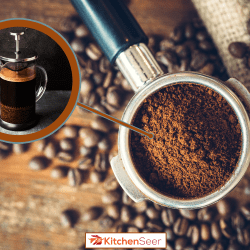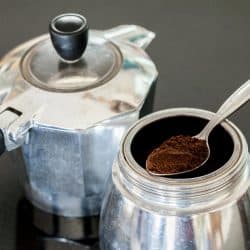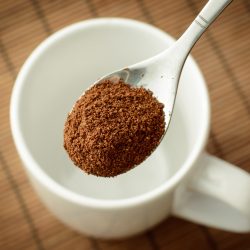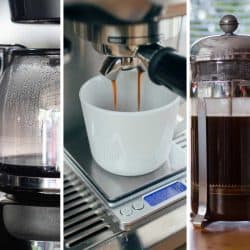There are many ways to make a cup of coffee. The French press is one way to do that. However, it requires more steps to use than the typical coffee maker. Do you need help using one? If so, you've come to the right place!
Before starting the process, it's crucial to pick the correct coffee grind. Avoid using anything that shares a coarseness of sand. Otherwise, it will go through the press, which you don't want it to do. Afterward, here are the steps you can follow:
- Choose the right coffee grind.
- Boil 40 ounces of water.
- Prepare your coffee grounds.
- Pour the hot water into the French press.
- Put the lid on and let it steep.
- Press the French press plunger.
- Pour the coffee into your mug.
As you can see, there's nothing too complicated about using a French press. It can be as easy as using a standard coffee maker! It just requires a tiny bit more effort. If you'd like a detailed guide on using it, keep reading. We'll address more details you might be dying to find answers for.
![A black Stanley French press next to a water heater and coffee mugs, How To Use A Stanley French Press [Step By Step Instructions]](https://kitchenseer.com/wp-content/uploads/2022/09/How-To-Use-A-Stanley-French-Press-Step-By-Step-Instructions-1200x800.png)
How To Use A Stanley French Press
Now we'll talk more about using a Stanley French press.
1. Choose The Right Coffee GrindPhoto
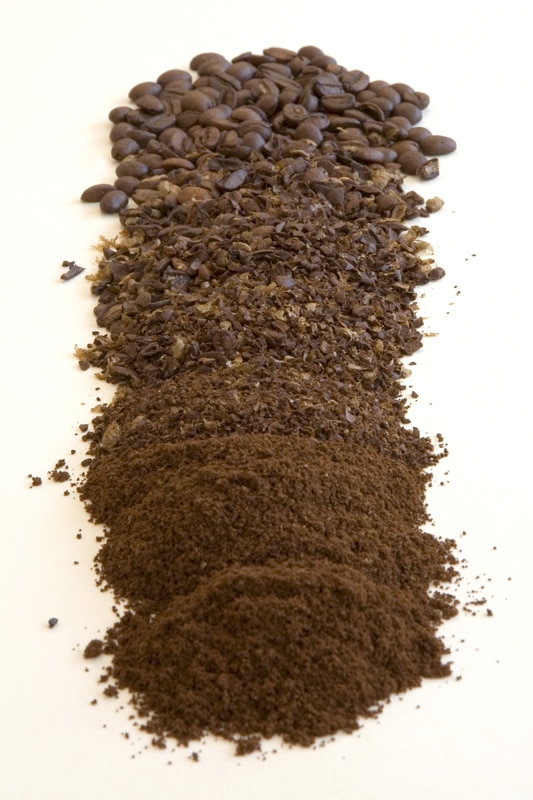
A French press is a simple coffee maker. It makes coffee by separating the ground from the coffee with a plunger. As you might guess, the grind size of the coffee plays a crucial role in this case.
Since you're pressing down on a plunger to separate grounds from coffee, you want to avoid smaller grinds. Otherwise, it might slip through the plunger. As a result, it will end up in your cup of coffee once you pour it into a mug.
A coarse grind is a generally accepted option. You can experiment with medium coarse and medium grinds. But, you have to remember that the French press is an immersion method of brewing.
Click here to see this coarse ground coffee on Amazon.
In layman's terms, it's a process that takes longer to extract flavors from the coffee grounds. For this reason, you should adjust the extraction time if you want to use fine coffee grounds in a French press.
Additionally, you can avoid grinds in your coffee by creating a barrier against them. To do this, wrap the end of the plunger with a coffee filter. We'll go over this in more detail later on.
Click here to see these coffee filters on Amazon.
2. Boil 40 Ounces Of Water
Start the process by boiling water. Of course, you want to avoid using too much water. In most cases, it's better to underfill than to overfill.
For this reason, you'd want to use 40 ounces of water or less in a 48-ounce Stanley French press. The temperature of the water should be a bit under the boiling point. A temperature of 195 Fahrenheit is the best for Stanley French presses.
As far as water choices go, use anything you'd like—it's a matter of personal preference. However, water containing minerals offers better coffee extraction.
3. Prepare Your Coffee Grounds
In a French press, the type of coffee bean doesn't matter. You can use your personal favorite. However, how much you use factors into how the coffee will come out.
If you want mild to medium smooth coffee, try using 1/2 a cup of coffee beans. Otherwise, you can use 3/4 of a cup for a stronger coffee.
Pour your desired amount into a burr grinder or any grinder available. Since we're using a French press, a coarse grind will yield the best results. Before you grind the beans, the water should be ready to use.
If not, you'll be letting the grounds sit for too long. Letting the grounds sit for too long will result in more oxidation. Consequently, it will affect the flavor of the coffee. Once the water is ready, grind your coffee beans and pour the grounds inside your Stanley French press.
4. Pour The Hot Water Into The French Press
After moving the grounds into the French press, pour the hot water. Follow that up by stirring up the coffee grounds with a spoon or another utensil. This way, you can saturate the coffee grounds instead of letting them float on top.
Stirring isn't a necessary step, but it's a recommended one. If you don't stir the grounds, the flavor of the coffee may not come out as strong. That's not to mention the few stragglers that will not submerge in the water.
As a result, some coffee grounds may end up in your cup of coffee.
5. Put The Lid On And Let It Steep
After stirring, close the French press. It won't be ready to serve right away; the water will need a few minutes to extract the flavors from the coffee grounds.
Of course, this is assuming you're working with a coarse grind. Smaller grind sizes need less time for extraction. In any case, let the coffee grounds steep in the French press for about four minutes.
If you can wait a little longer, let it steep for six to eight minutes. Avoid letting it steep longer than this. Otherwise, you may end up over extracting. Over-extracted coffee is bitter and not flavorful at all.
Fine Coffee Grounds
If you are working with fine coffee grounds, this step changes. As mentioned, smaller grind sizes need less time for extraction.
Instead of waiting four minutes, the wait time lowers significantly. A steeping period of around 45 seconds is sufficient to extract the most flavor. Since we have such a low wait time, you'll likely need to steep and press simultaneously.
Before putting the lid back on, wrap the end of the plunger with a coffee filter. This step is essential to prevent coffee grounds from slipping through the French press filter. Plus, having another filter in place will increase the pressing time.
For this reason, you press as the coffee grounds are steeping. Once the plunger reaches the bottom, the water probably had enough time to extract the flavor.
6. Press The French Press Plunger
After four minutes of steeping, press the plunger. It should go down with a little bit of effort. Once it reaches the bottom, you can stop.
You don't need to pull it back up again. At this point, it's ready to serve. Before you pour, take a look at the lid. It may have an arrow that you will need to line up with the spout.
7. Pour The Coffee Into Your Mug
Finally, it's time to pour the coffee into your mug. That's all there is to it! After about 15 minutes of waiting, it's time to enjoy your coffee!
Here's a video you can use to follow along too:
How To Remove Coffee Grounds From A French Press
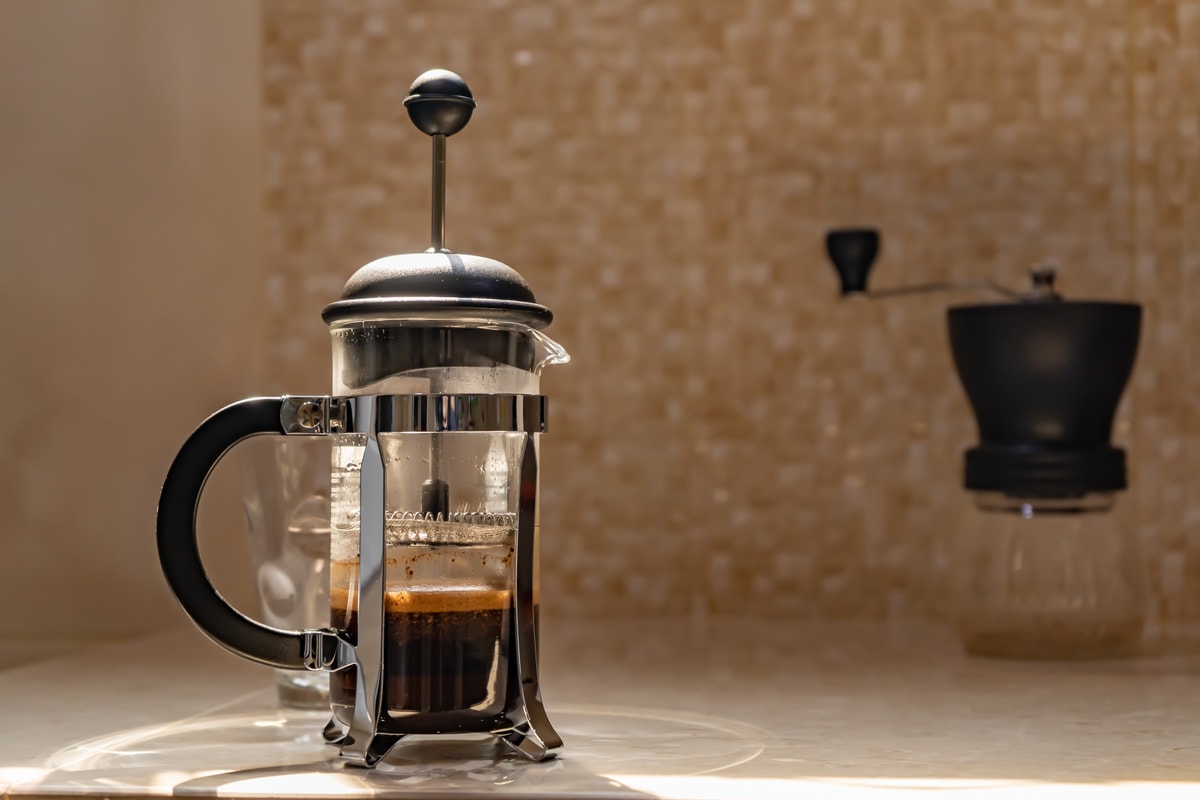
After you finish your coffee, you may wonder what to do with the coffee grounds in the French press. At this point, it will still be too hot to touch.
For this reason, you want to start the cleaning by filling it with cold water. Pull the plunger and take off the lid. Then, head over to the sink and fill it about halfway.
The cold water will help the coffee grounds and the small amounts of coffee in the press cool down. After giving it some time to cool, close the French press with the lid and flip it upside down.
This way, the water will slowly drain out of it. It may take some time to drain it completely. To help with draining, push the plunger up. However, avoid pressing it up to the bottom of the container. Otherwise, some coffee grounds will stick to it.
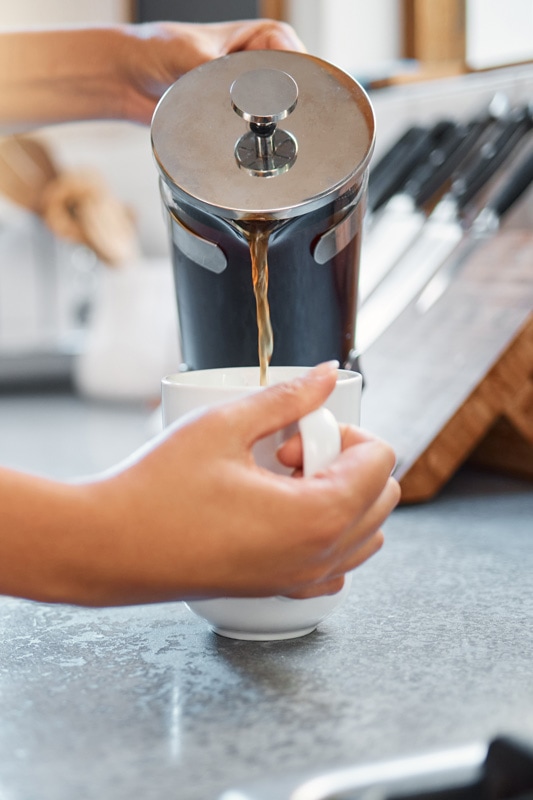
Throwing Out The Coffee Grounds
Once you drain the water, it's time to head over to the nearest trash can. This step will require some quick reflexes and maneuvering. First, pull the plunger as far as you can.
Then, take off the lid. If careful, the coffee grounds will fall onto the plunger without much spillage. A bit of the coffee grounds will fall into the trash can as you open the French press.
Finally, throw the coffee grounds on the lid into the trash can. All that's left to do is wash the little bits left in the French press. If you need help visualizing this strategy, here's a video for guidance:
How To Clean A French Press
There are a few ways to approach cleaning a French press. You can rinse it with water only or use dish soap to clean it.
Rinsing the French press with water will only remove the remaining coffee grounds. But, it won't remove the oils left behind. Therefore, you may want to use a bit of dish soap.
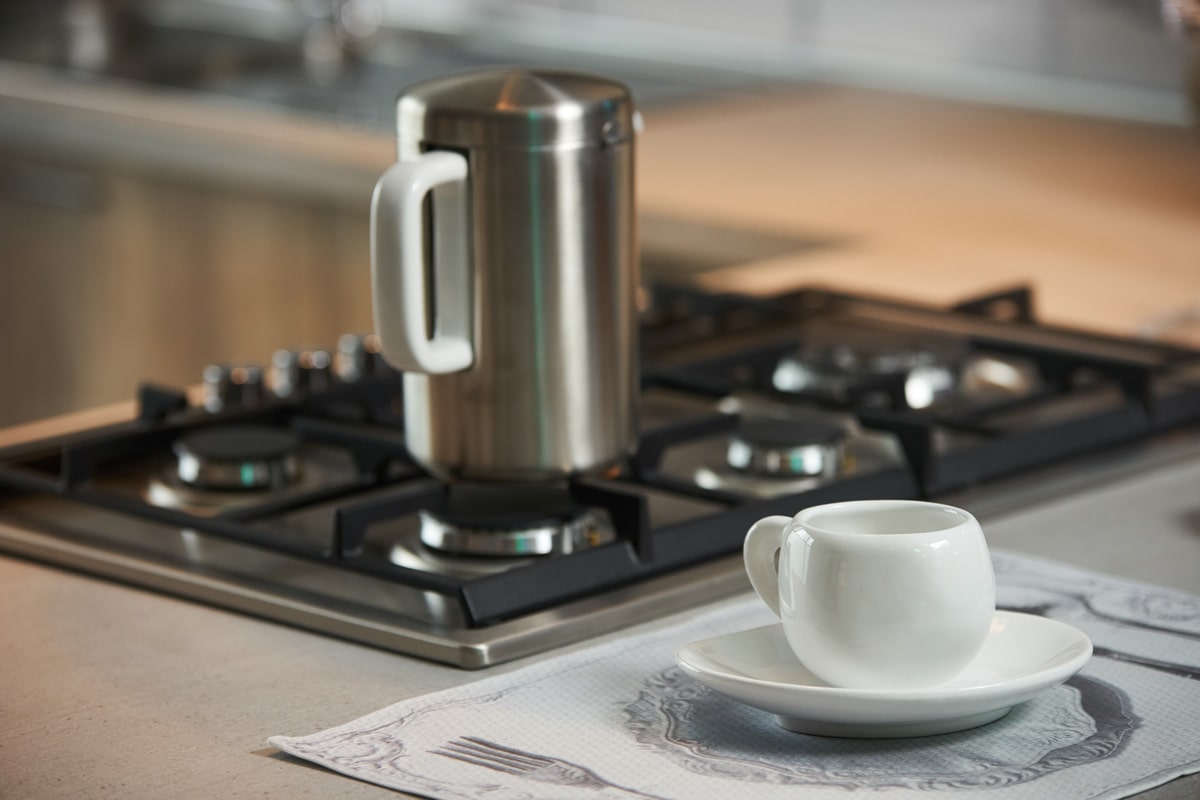
In any case, fill the container with water. Then, put the lid back on. Press and pull the plunger a few times to disturb anything in there. Finally, rinse the plunger and the container out.
In Closing
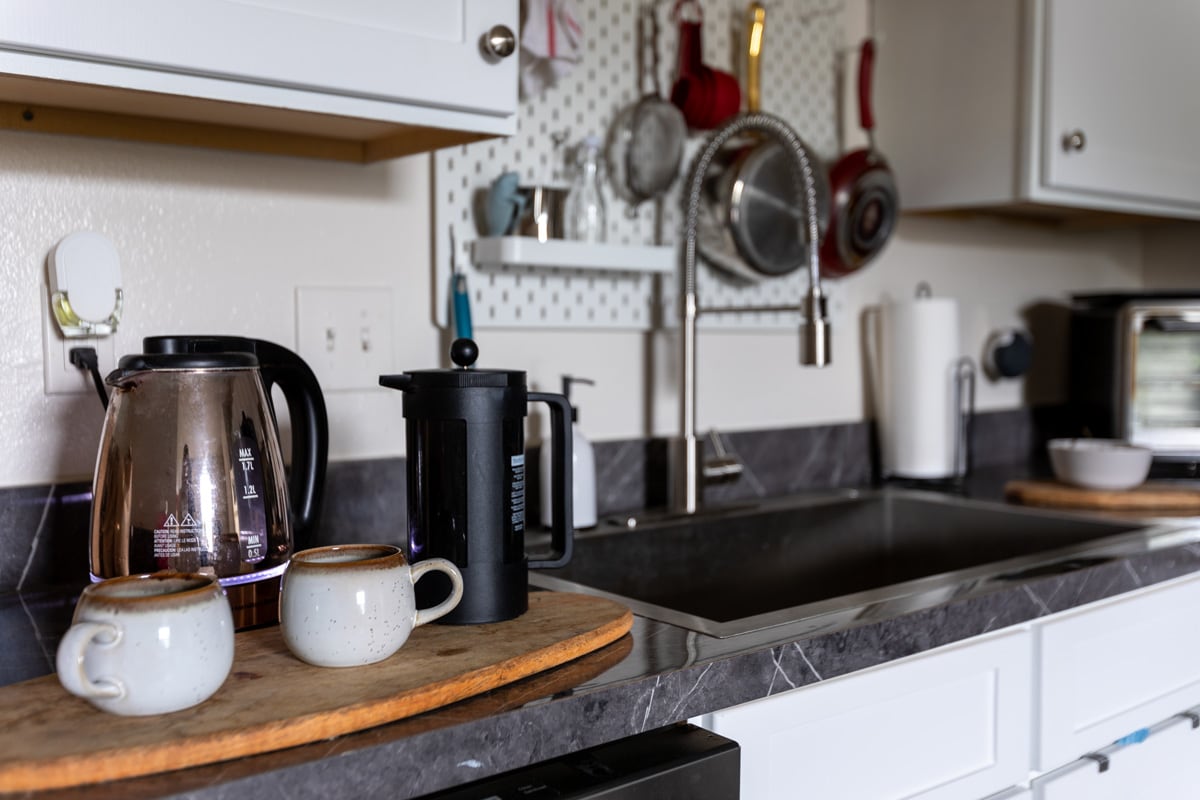
Using a French press is easy despite having more components to use. As you can see, there's not much to the process. Now you can move along and use it with confidence. We hope you found this informative. Good luck if it's your first time French pressing coffee!
Before you go, do you have more French press concerns? Do you want more information on disposing of the coffee grounds? To learn more, check out:
How To Dispose Of Coffee Grounds From French Press
Are you wondering if French presses need filters? For more information, check out:
Do French Presses Need Filters?



